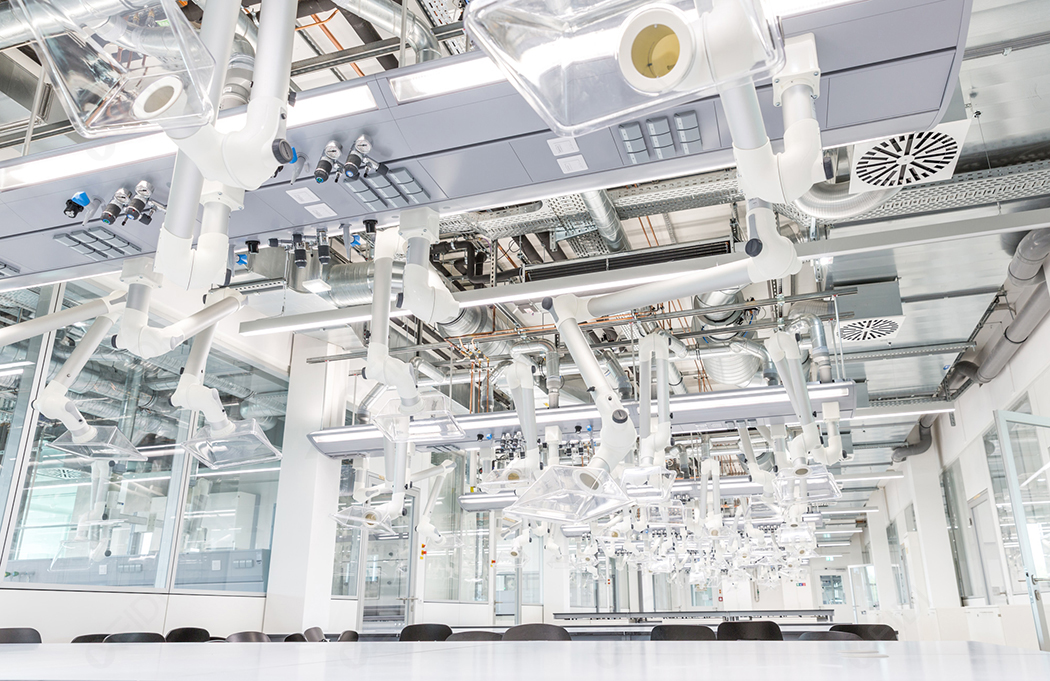Welcome to the official website of Xidi laboratory, the laboratory design and decoration recognize Xidi!
|
|
Home >> News >> Technology
文章出处:Technology|阅读量:847|发表时间:2020-07-27
Ventilation is a very important part of the laboratory, so laboratory ventilation must be designed. So, how can we do a good job in laboratory ventilation design? There are four main points, which will be summarized below.
Point 1: Selection of the number of air changes
For the selection of the number of air exchanges in the laboratory, the minimum indoor air exchange rate is 6 times/h-8 times/h, and the overall air exchange frequency is taken away from the room by the total air volume discharged from the local exhaust equipment or other room exhaust The cooling air volume required by the heat load and the minimum number of air changes required are determined by the air volume.
Note that if the laboratory is equipped with analytical equipment that generates high heat load, the ventilation rate should be increased accordingly in the laboratory ventilation design. Specifically, the calculation of the minimum suction surface velocity of the operation port of the fume hood should refer to light, moderate hazards or dangerous hazardous substances, and the minimum suction surface velocity is 0.5m/s.
Point 2: Exhaust and air supply form
For the exhaust and air supply modes of the laboratory, when the indoor exhaust air volume is too large, it is recommended to install an outdoor fresh air supply system and include the fresh air load. Note that all exhaust devices must share an exhaust system, and the laboratory needs to use the exhaust system continuously, it is recommended to install an air supply system.
The exhaust gas in the laboratory must be discharged outdoors, and unless there is a need for cleanliness in the room, it must be maintained at a negative pressure for the adjacent area. The selection of a 100% fresh air supply system is also an important part of laboratory risk assessment. This system is suitable for fume hood environments, and it is not necessary for ordinary laboratories.
Point 3: Room pressure difference
For the room pressure difference in the laboratory ventilation design, unless the cleanliness requirements of the laboratory are high, a relatively negative pressure must be maintained. However, it should be noted that the specific pressure difference in the room should be determined according to the actual situation.
When does the laboratory room pressure difference have to be positive? When must it be negative pressure? If the room has strict humidity requirements, then a positive pressure must be maintained. If there is a need to prevent toxic, corrosive, high-temperature gas or volatiles from spreading to other rooms in the room, then maintain negative pressure.
Point 4: Control system
If you want to reasonably control the pressure, pressure difference, ventilation, temperature and humidity in the laboratory, a control system must be done in the laboratory ventilation design. Specifically, it can be done from two aspects: adjusting the temperature and humidity control of the equipment and monitoring safety facilities to protect employees Up.
The control system of laboratory ventilation design is divided into two types: constant air volume and variable air volume. The former is used to provide total exhaust air flow for fume hoods and heating furnaces, and mechanical limit stops are used to limit the valve opening, which can reduce the maximum The flow rate is 40% smaller, and the capacity of the latter is reduced by more than 10% or 20%.
